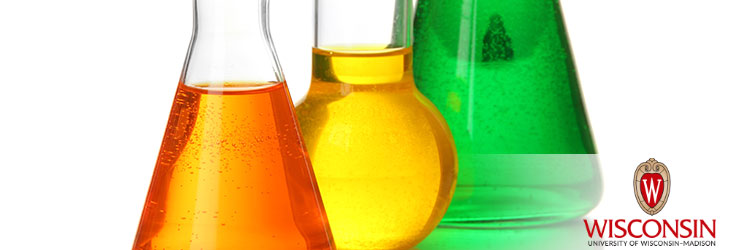Materials & Chemicals

Plasma Treatment within Dielectric Fluids
WARF: P03049US
Inventors: Ferencz Denes, Sorin Manolache
The Wisconsin Alumni Research Foundation (WARF) is seeking commercial partners interested in developing a method for producing a plasma discharge in liquids at low temperatures and atmospheric pressure that can be used to treat gasoline and other liquid fuels to increase combustion efficiency.
Overview
Conventional techniques for generating plasmas aren't suitable for plasma reactions in liquids such as gasoline or diesel fuels. They are inefficient and can result in significant heat and unwanted effects.
The Invention
UW–Madison researchers have developed a method for producing a plasma discharge in liquids at low temperatures and atmospheric pressure. It shows particular promise for treating gasoline and other liquid fuels to increase combustion efficiency.
In the method, bubbles of gas or vapor are first created within a liquid through mechanical, chemical or other means. Next, the liquid is subjected to an electric field that generates micro-discharges, and thus a plasma state, within the bubbles. Unlike previous techniques aimed at treating liquids by dielectric barrier discharge (DBD) plasma processes, this method produces a very large plasma/liquid interface per unit volume of liquid. This feature is needed to treat the entire liquid volume without causing heating or other unwanted effects.
Using this process, the researchers have shown that octane can be broken down into lower molecular weight compounds of higher burning efficiency. Thus, this technology could potentially be used for in-line treating of gasoline and diesel fuels prior to fuel injection, to increase combustion efficiency and possibly reduce emissions.
In the method, bubbles of gas or vapor are first created within a liquid through mechanical, chemical or other means. Next, the liquid is subjected to an electric field that generates micro-discharges, and thus a plasma state, within the bubbles. Unlike previous techniques aimed at treating liquids by dielectric barrier discharge (DBD) plasma processes, this method produces a very large plasma/liquid interface per unit volume of liquid. This feature is needed to treat the entire liquid volume without causing heating or other unwanted effects.
Using this process, the researchers have shown that octane can be broken down into lower molecular weight compounds of higher burning efficiency. Thus, this technology could potentially be used for in-line treating of gasoline and diesel fuels prior to fuel injection, to increase combustion efficiency and possibly reduce emissions.
Applications
- Treating gasoline and other liquid hydrocarbon fuels to increase combustion efficiency and reduce emissions
Key Benefits
- Readily implemented within an engine’s fuel line directly upstream of the fuel injector
- System can operate in liquid media under either batch or continuous flow modes.
- Eliminates heating of liquid and other unwanted side effects by using micro-discharge rather than streamer-type plasma discharges
- Efficient—unlike previous techniques, effectively treats entire liquid volume, not just the liquid lying along the discharge path
Tech Fields
For current licensing status, please contact Mark Staudt at [javascript protected email address] or 608-960-9845